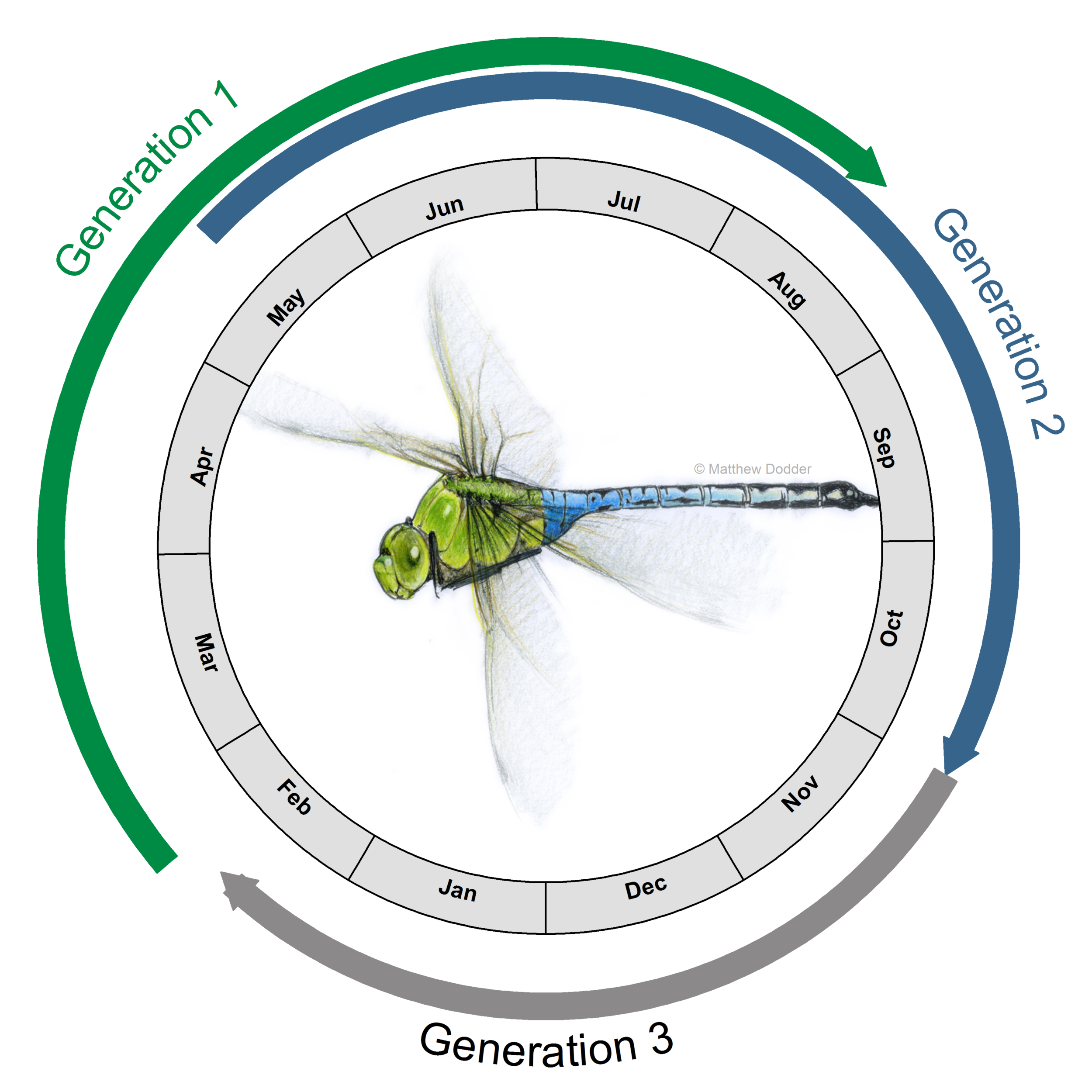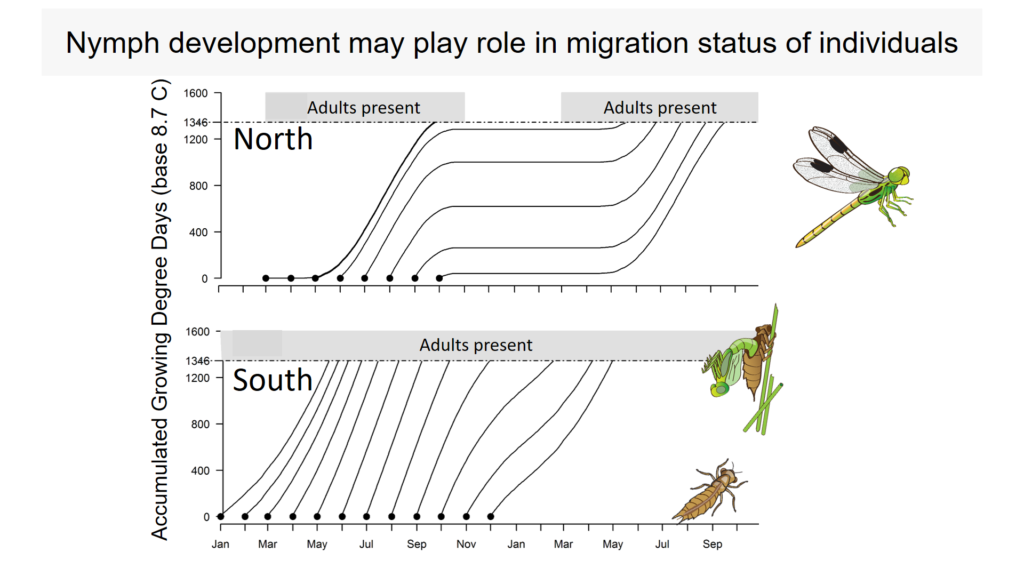Darner Flight Watch
Move over Monarchs, there’s a new migratory insect in town!
The Common Green Darner (Anax junius) is a charismatic, migratory dragonfly species that is known for traveling long distances (over 650 km) during its short time as an adult (approximately 7 weeks). Similar to other insects, this species has a multi-generational migration, which means that individuals never finish an entire migratory circuit from the north to the south and back to the north again. This differs from our favorite feathered migrants who routinely complete full north-to-south migrations.
If a single Green Darner does not finish a full migratory cycle, what does migration look like for this species? Green Darner migration likely spans three generations over the course of a year. Biologists suspect that one generation exists purely as a non-migratory resident in the southern section of the species’ range during winter months. Then, the second generation migrates north from their southern ponds, lays eggs, and dies. Finally, the third generation ecloses (emerges as adults) from its northern ponds sometime between August and September, and then migrates south where the entire cycle starts anew.

Green Darner generations over the course of a year
© Hallworth et al.
Surprisingly, not all migratory Green Darners emerge and migrate within their first season. In the north, some nymphs that hatched from eggs laid by late arriving migrants do not have time to fully mature in one season. As a result, they enter diapause (a state similar to true hibernation in mammals) for the winter and resume growth come spring. Once these individuals finally emerge as adults, they begin their trek south.
It is also possible that some Green Darners reproduce during their migrations south. If this happens, these nymphs might (a) enter diapause as the temperatures drop below 48 degrees F and eclose the following spring when temperatures are favorable, or (b) undergo rapid development, eclose, and migrate, depending on the photoperiod (amount of daylight) and temperature at which the eggs hatch and the nymphs develop.

© Hallworth et al. This figure shows predicted common green darner (Anax junius) nymph development (black lines) within hardiness zones 7-11, assuming eggs are laid (black point) on the first day in each month that flying adults are observed (gray boxes). Nymphs are able to eclose after accumulated growing degree days above a base of 8.7 °C reach 1346 days (dotted horizontal line). Nymphs enter a state of diapause when growth is flat.
Green Darner migratory movements and nymph development are closely tied to temperature. Migration is strongly correlated with the 9.17° Celsius thermocline during the spring. This means that individuals that eclose from ponds in the South migrate north only when the daily temperatures are at or above approximately 50° F (9.17 degrees C). Fall migration follows a similar temperature pattern; the last remaining individuals were recorded when temperatures were 9.54° C (approximately 49° F).
Given the strong association between temperature and migration of Green Darners, we are curious how climate change may alter migration timing. We made some predictions using the weather forecast about when we might start seeing the first migratory Darners arrive in Vermont. Will Green Darners begin to migrate north sooner and stay later before heading south? Will populations be able to overwinter farther north, possibly reducing total migration distances? We need to collect more data on arrival and departure dates of Green Darners to begin understanding if climate change is affecting migrations. That is where the Darner Flight Watch Mission comes in!
We need your help locating and observing the first Green Darners appearing in Vermont! If you are new to identifying Green Darners, take a few minutes to check out our Field Guide. Once you know what you are looking for, you are ready to begin chasing dragons! At nearly three inches in length, with a four-inch wingspan, Green Darners are pretty easy to spot. They can show up anywhere—in your backyard, a field, a river—but they will most commonly be found flitting above lakes and ponds where they breed. Keep your eyes to the sky, and report your sightings to iNaturalist or Odonata Central. Happy Dragon hunting!
![]()






